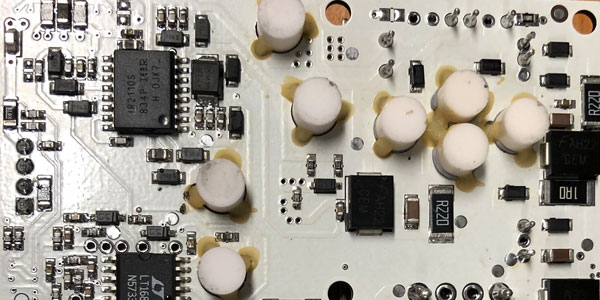South African materials technology used in CERN’s ATLAS experiment
- Wits University
The use of South African technology to produce high tech electronic components will cost five times less than importing the technology from the United States.
A team of scientists from Wits Institute for Collider Particle Physics (ICPP) and iThemba LABS in collaboration with the South African firm, CERadvance Engineering, have developed an innovative solution that will provide a cost-effective solution to the European experiment, ATLAS.
The team investigated the design and production of ceramic cylinders that could be used in the design of a new Low Voltage Power Supply (LVPS) of the ATLAS detector, which is situated along the Large Hadron Collider at CERN. The LVPS will power the next generation of experimental electronics in the ATLAS detector. The locally designed ceramic cylinders would help in reducing heat in the LVPS during the operation of the detector.

“In the original design of the ATLAS Low Voltage Power Supply (LVPS), it was assumed that South Africa would need to import American technology in order to meet the design requirements,” says Professor Bruce Mellado, Director of the ICPP. “This was needed as there was no other technology available in the market that met the stringent performance requirements of ATLAS.”
After investigation it was found that the Pretoria-based company, CERadvance Engineering possessed the required expertise and technology to produce the ceramic cylinders required. CERadvance Engineering specialises in manufacturing and production of high-tech ceramic components that can be used to dissipate heat amongst other applications. The company has to date produced over five thousand ceramic cylinders for the first prototypes of the low voltage power supplies made entirely in SA.
According to CERadvance Managing Director, Martin Beyers, the main challenge was to produce the parts to within microns from nominal dimensions.
 “CERadvance is well-versed in manufacturing to tight engineering tolerances, but since the use of very expensive diamond grinding processes had to be avoided due to the large cost involved, producing the parts to within microns from nominal dimensions as sintered without any further grinding proved to be quite a unique challenge. Working with iThemba LABS and the University of the Witswatersrand on such a prestigious project has been a very rewarding experience,” says Beyers.
“CERadvance is well-versed in manufacturing to tight engineering tolerances, but since the use of very expensive diamond grinding processes had to be avoided due to the large cost involved, producing the parts to within microns from nominal dimensions as sintered without any further grinding proved to be quite a unique challenge. Working with iThemba LABS and the University of the Witswatersrand on such a prestigious project has been a very rewarding experience,” says Beyers.
The use of this South African technology will be more cost-efficient, by a factor of five, compared to importing from the United States, illustrating that South Africa can be competitive on the global stage, says Mellado.
Wits University’s Edward Nkadimeng, a researcher within the ICPP says that the team have undertaken rigorous thermal testing on the custom-made Al2O3 (Aluminum Oxide) components and were able to demonstrate that this technology performs optimally within an LVPS.
“It is important for the ceramic cylinders to be manufactured with great precision as any deviation has been observed to have an adverse effect on the LVPS operating temperatures thereby reducing their life expectancy within the ATLAS detector,” says Ryan Mckenzie another Wits researcher.
South African involvement and research at CERN – through the SA-CERN collaboration –has contributed vastly to South African research and industry over the years.
Dr Betty Kibirige observed that laboratories such as the one sponsored at the University of Zululand (UNIZULU) by the SA-CERN collaboration, extends opportunities to South Africans from different walks of life, to participate in processes that lead to local cost-effective solutions such as these high-tech ceramic cylinders.
“Collaboration between science and industry continues to show how fundamental research contributes to pushing the technical capabilities of our local industry,” says Mellado.
The production of these high-tech components on the LVPS ceramic cylinders was possible thanks to a joint and coordinated effort in investing and innovating that now enables local industry and researchers in building complex components more efficiently and cost effectively. The team is grateful for the assistance of the NRF, the DSI, iThemba LABS and other stakeholders in this project.

